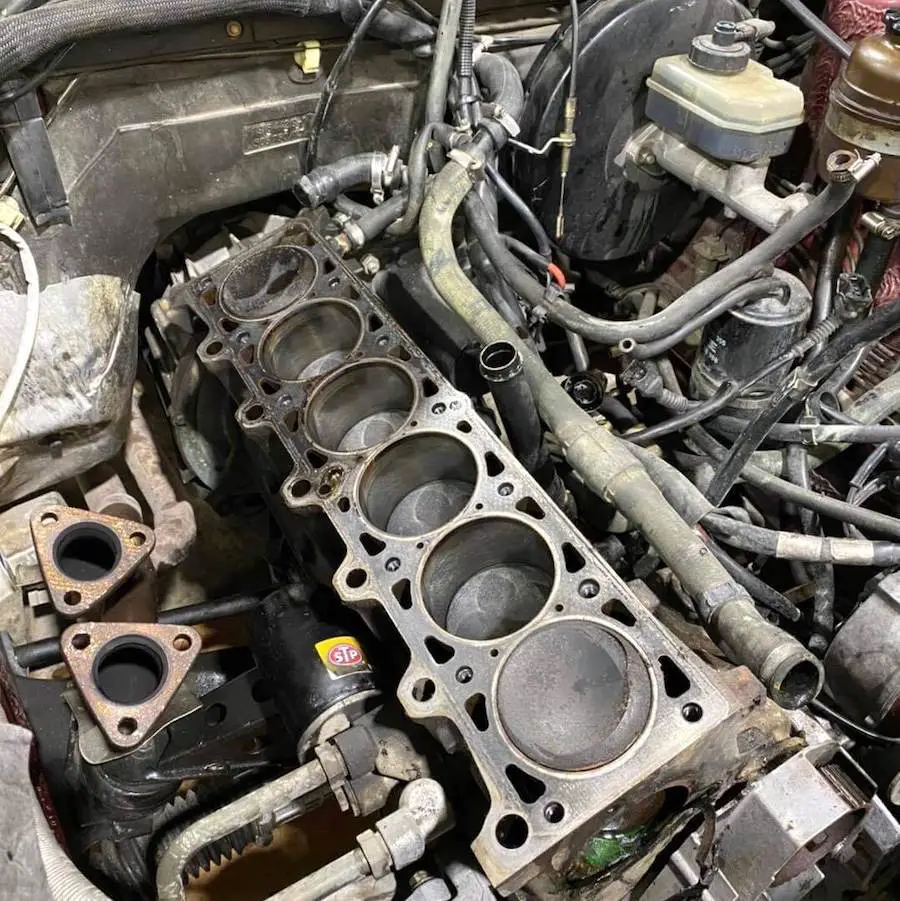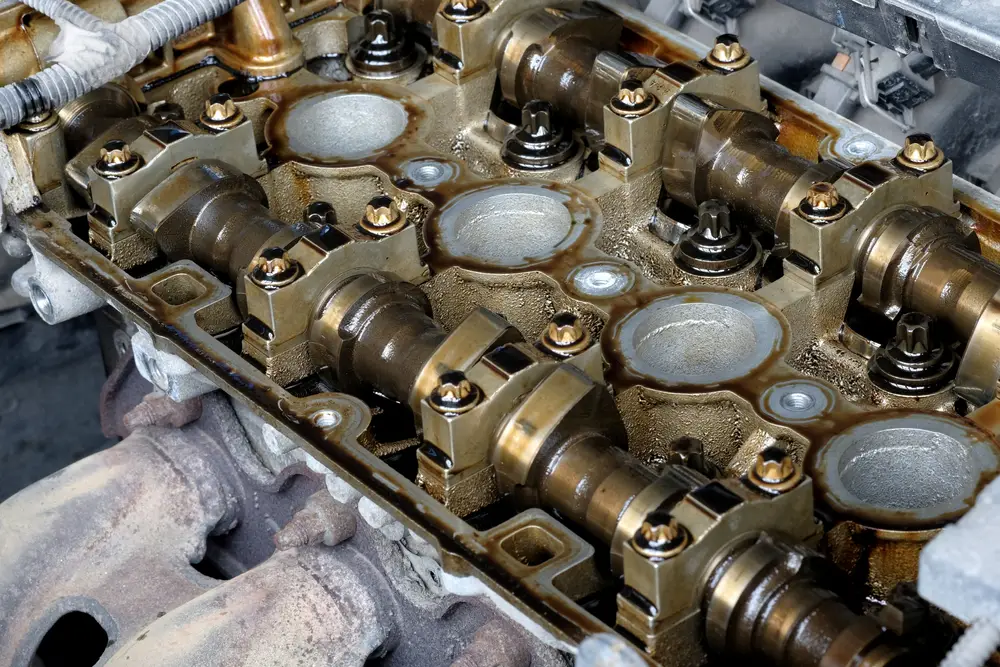Blown head gasket symptoms include white smoke from the exhaust and engine overheating. These signs indicate a potential issue with the head gasket, which can lead to costly repairs if not addressed promptly.
Addressing blown head gasket symptoms early can prevent further damage to the engine and save you money in the long run. In this blog post, we will discuss common signs of a blown head gasket, the causes behind it, and what steps you can take to diagnose and fix the issue.

Credit: www.prohory.cz
Contents
Recognizing Blown Head Gasket Symptoms
Recognizing blown head gasket symptoms is important for car owners. Look out for signs like overheating, white smoke from the exhaust, coolant leakage, and a milky appearance in the engine oil, as these may indicate a blown head gasket. Stay vigilant and address the issue promptly to avoid further damage to your vehicle.
A blown head gasket can lead to serious engine damage if not addressed promptly. By learning how to spot the signs of a blown head gasket, you can take the necessary steps to prevent further complications.
White Smoke From Exhaust
One of the most common blown head gasket symptoms is the presence of white smoke coming from the exhaust pipe. If you notice thick, white smoke billowing out while your engine is running, it could be a clear indication that your head gasket has blown. This smoke is caused by coolant leaking into the combustion chamber and being burned along with the fuel. It is important to address this issue promptly to avoid any further damage to your engine.
Milky Oil: A Telltale Sign
Another telltale sign of a blown head gasket is the presence of milky oil. If you check your engine oil and find that it has a milky or foamy appearance, it is a strong indication that coolant is mixing with the oil. This happens when the head gasket fails and allows coolant to leak into the engine.
Milky oil can lead to poor lubrication and can cause significant damage to engine components. It is crucial to have your vehicle inspected and repaired as soon as possible to prevent further engine problems.

Credit: www.youtube.com
Engine Overheating: A Red Flag
When it comes to car troubles, engine overheating is a red flag that should never be ignored. A blown head gasket can be the underlying cause, leading to a cascade of problems that can wreak havoc on your vehicle’s performance and longevity.
Temperature Gauge Spikes
If you notice abrupt spikes in your temperature gauge, it could be a sign of a blown head gasket. Keep an eye on the gauge for sudden fluctuations, as this may indicate issues with the engine’s cooling system.
Coolant Loss Without Leaks
Mysterious coolant loss without visible leaks is another potential symptom of a blown head gasket. If you find yourself constantly topping up the coolant reservoir without any apparent leaks, it’s time to consider the possibility of a failing head gasket.
Performance Issues And Diagnosis
A blown head gasket can lead to numerous performance issues in a vehicle. Symptoms may include overheating, coolant leakage, decreased power, and white smoke from the exhaust. Accurate diagnosis is crucial to prevent further damage to the engine.
Power Loss
Performance issues related to a blown head gasket may manifest as power loss. This occurs due to compression leaks in the engine, affecting its ability to generate power effectively.
Rough Idle
Another common symptom is a rough idle, where the engine may vibrate or shake irregularly when running at a standstill. This can be caused by leaking coolant into the cylinders.
Professional Inspection And Testing
When experiencing these symptoms, it’s crucial to seek professional inspection and testing to accurately diagnose the issue. Mechanics can perform compression tests and cylinder leak-down tests to pinpoint the problem.
By conducting thorough diagnostic procedures, experts can identify the exact location and extent of the damage to the head gasket. This ensures precise repair and preventive measures for optimal engine performance.

Credit: www.capitolsubaru.com
Frequently Asked Questions
Here are some FAQs about blown head gasket symptoms –
What Are The First Signs Of A Blown Head Gasket?
The first signs of a blown head gasket may include white smoke coming from the exhaust, overheating of the engine, loss of coolant with no visible leaks, and a milky substance in the engine oil. It’s important to address these symptoms promptly as a blown head gasket can cause significant damage to the engine if left untreated.
How Does A Car Act With A Blown Head Gasket?
A car with a blown head gasket may overheat, lose power, or produce white smoke from the exhaust. It can also lead to mixing of oil and coolant, engine misfires, and coolant leaks. Get it checked by a mechanic for repairs.
What Can Be Mistaken For A Blown Head Gasket?
Common issues mistaken for a blown head gasket include overheating, white smoke, and coolant loss. Other culprits could be a cracked cylinder head, damaged radiator, or a faulty water pump. Always consult a professional mechanic for an accurate diagnosis.
Will A Car Still Run With A Blown Head Gasket?
No, a car will not run with a blown head gasket. The head gasket is responsible for sealing the engine’s combustion chamber and coolant passages. If it fails, coolant can leak into the combustion chamber or oil can mix with coolant, leading to overheating and engine damage.
Conclusion
Recognizing blown head gasket symptoms is crucial for maintaining your vehicle’s health. Addressing these signs promptly can prevent costly repairs and further damage. By staying vigilant and seeking professional help, you can ensure your engine’s longevity and performance. Stay informed and proactive for a smooth driving experience.





